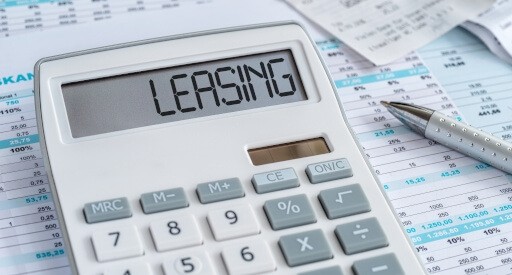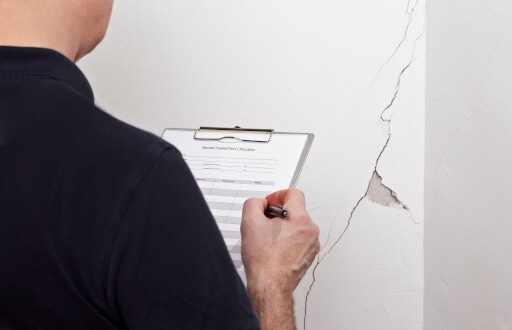Whether you are new to being a landlord or a seasoned rental veteran, it’s a good idea to review your lease agreement and make sure it not only covers the basics like the property address, dates, names of tenants, rental amounts, and security deposits, but that it covers other situations that might arise as well. If it isn’t covered in the lease agreement, it will be much trickier to remedy the situation.
Before adding any clauses to your lease agreement, talk with a real estate attorney who is familiar with the laws in your city and state. The laws not only vary by location, but they are also updated and changed frequently. Here are eight clauses that you might want to discuss with your real estate attorney about adding to your lease agreement:
1. Severability Clause
A severability clause states that even if one part of the lease is deemed invalid or unenforceable, the remainder of the lease is still legally binding. Basically, the unenforceable clause is “severed” from the lease, leaving the rest of the lease intact. It’s mainly a legal precaution, but it’s an important clause to have in your lease.
This clause usually contains wording along these lines: “If any provision of this agreement or the application thereof is determined to be invalid or unenforceable, it shall not affect the enforceability of any other provision in this agreement. Instead, the invalid or unenforceable provision shall be deemed severed from this agreement, and this agreement shall be enforced as if the agreement did not contain the invalid or unenforceable provision.”
Without this clause, a judge could rule the entire lease void because of one invalid or unenforceable provision, even if that invalid or unenforceable provision was accidental Your lease might be rock-solid, but by not including this clause you run the risk of a judge tossing the entire lease for one illegal provision.
2. Late Fees and Allocations
If you are collecting rent through Apartments.com and your tenants have set up automatic rent payments, late rent likely won’t be an issue for you. But this clause is still a good one to include since it clarifies the amount of the late fee and any applicable grace period as required by your state and local laws.
If you don’t specify a late fee in your lease, it will be almost impossible to charge one if you need to. Before determining the amount of your late fee, check the laws in your area to find out if there’s a limit on the amount you can charge.
3. Subleasing
First, decide whether you’ll permit subleasing. If you don’t want your tenants to sublease your rental, then make sure your lease clearly states this. If you will allow subleasing, you want to establish rules concerning fees as well as the application and screening process. This lease clause should state that your tenant may not sublet without your prior, written consent. If you plan to charge your tenant a fee to sublet, state the amount in the clause.
The subleasing clause should also include wording about your right to reject any sublessee that doesn’t qualify, and that all subletting individuals are required to submit an application to you, the landlord, for evaluation and screening. Subleasing is fairly common, especially if you rent to students. They might want to sublet for the summer when they head home, rather than giving up the rental and having to find a new one when classes start again in the fall. If you believe subletting could be an issue, this clause will cover any concern that might arise.
4. Joint and Several Liability
The legal term “joint and several liability” simply means that everyone on the lease is responsible for the entire rent amount and any damages or lease violations. They are responsible both jointly (meaning everyone on the lease can be held responsible for a lease violation) and individually (so if someone moves out, the remaining tenants are still responsible for the entire rent, not just their share). This clause allows you to consider all tenants as a single entity when giving notice, serving court documents, collecting rent, or suing for damages.
Many tenants find this clause confusing, so you might want to explain what this clause means to your tenants before they sign the lease to make sure they understand that they can be held responsible for everyone on the lease. Encourage co-applicants to draw up a roommate agreement to avoid issues down the road.
Research the landlord-tenant laws in your state so you’re aware of any potential exceptions to this clause. For example, forty states permit courts to grant possession of the property to the survivor of domestic abuse or assault and exclude the abuser from the property, while seven states allow for lease bifurcation in this case (the removal of the perpetrator from a unit without penalizing the victim who wants to remain in the unit).
5. Grounds for Termination of Tenancy
This clause explains to your tenants exactly what infractions could violate the lease agreement, potentially leading to an eviction. It will include violations of the rental agreement by the tenant or by guests. You’ll want to research the landlord-tenant laws in your state to make sure you are in compliance with state guidelines. Some of the violations that might be included in this section include the failure to pay rent, safety violations, or criminal activity on the property.
Specify the time frame in which notice of the violation will be delivered as required by your state, the time the tenant will have to comply with the notice, and the steps that could follow if the violation isn’t addressed.
6. Lease Renewal
Decide if you want the lease to automatically renew or not. If you decide to allow your lease agreement to automatically renew, you’ll want to specify that either you or the tenant must give written notice within a set number of days if the lease won’t be renewed at the end of the lease term. In this case, the lease would stand and automatically renew until either of you provide notice to prevent the lease from renewing. If your tenant decides to stay and you would like them to stay, then nothing needs to be done since the lease is on-going until one of you ends it.
If you would prefer to have the lease expire at the end of the term, you can still require notice from your tenant of their intent to move out (the time required varies by state, but usually 60-90 days). If your tenant opts to renew the lease and you agree to the renewal, then you would need a completely new lease to be drawn up.
You might also want to specify the consequences for the tenant not giving proper notice when ending the lease at the end of the lease term. For example, if you require 60 days’ notice of non-renewal, your renewal clause might state that if 60 days’ notice isn’t given, the tenant will be held responsible for the equivalent rent due for 60 days after notice is given.
7. Use of Premises
All tenants over the age of 18 should sign the lease, and occupancy should be restricted to those listed on the lease. This keeps tenants from moving people in without your knowledge. This clause should also state that the property is a private dwelling and no commercial activities are allowed. You’ll also want to include wording around how long guests can stay at the rental (usually two weeks within a six-month period). If a guest stays longer than this, they should be added to the lease agreement.
8. Surrender of Premises
Including this clause will ensure there’s no confusion about what you expect when your tenant moves out. Specify how you want the property returned to you (usually in better or equal condition to when your tenant moved in). This clause will also state what tenants are responsible for doing before moving out, such as any cleaning or repairs that you require. Specify that all possessions must be removed by the tenant by a set number of days (i.e., two days after termination of the lease). State that you, the landlord, will not be held responsible for the value, preservation, or safekeeping of the tenant’s property.
These aren’t the only clauses you might want to consider when creating a lease agreement. Talk with a lawyer familiar with your state and local laws to determine which clauses are applicable to your location and situation. There’s an easier way to create lease agreements. Just use Apartments.com! With our Rental Tools platform, you can easily create a lease that fits your property and your standards. Our fully customizable lease agreements are state-specific and legally binding, meaning you can create a lease no matter where your property is located, and it will adhere to all state laws and local ordinances. Once your lease is created, your tenants can quickly sign online. No more hand-delivering paper leases and then trying to find a place to store them! Apartments.com keeps all your leases neatly organized and accessible so you can reference them whenever you like.











